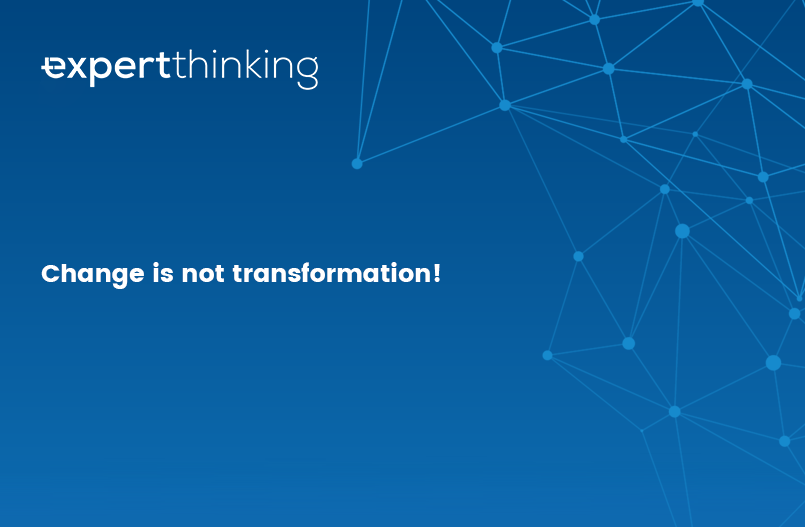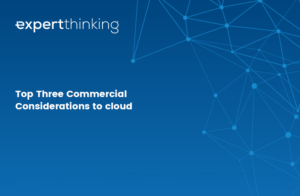I always wonder; is ‘transformation’ even the right word? Most “transformations” are really evolutions of existing services, products or application – they describe activity that incrementally improves the way we use technology to better serve the business. And, whilst incremental change is a good thing, it’s not transformation.
In my opinion, the word ‘transformation’ is misused… a lot! I’d argue of the many, many transformation initiatives in existence right now, very few are transforming anything. This then highlights the statement: transformation and change are not the same things.
I can see how they get confused. Looking at the dictionary definitions, they could be largely interchangeable. There is, however, an important difference.
- Transformation is step change, non-linear and disruptive
- Change is incremental, linear and “non-disruptive”
Most confuse what they are in fact doing. Which is changing their tech stack – which is valuable, necessary and potentially complex. But, what they are not doing is transforming their organisation – they are not addressing the culture, relationships, constraints, etc. that exist.
To transform, you need to look to your culture, people and processes. It’s not about what you use but how you use it, and who uses it.
Many people refer to a transformation programme because it’s big, complex and will take a long time when, in fact, all they are doing is changing technology or introducing new tools – they are not evolving the way they are working to truly benefit from the new technology.
Transformation is the act of evolving the way you work, not moving from one technology to another. Transformation is about how you use and consume technology, not the technology itself. It’s about how you’re working, not what technology you’re using. Transformation is the the act of equipping your organisation with the culture, skills, processes, etc. to be able to leverage new and emerging technologies to better serve the business.
A change to the underlying technology, language, tools, etc. you’re using will not naturally align your people (and processes) to drive benefit. Quite the opposite. More often than not, they will end up making the same mistakes, recreating the same (or worse) problems all over again.




